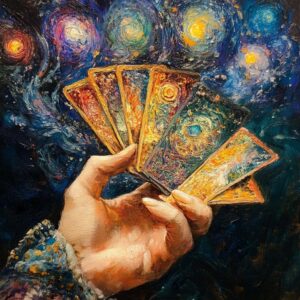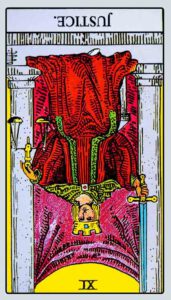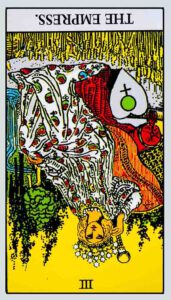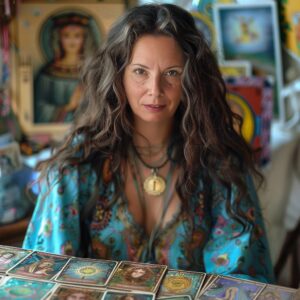
There are instances during a Tarot reading when cards are drawn in a reversed position. In such cases, the card is said to be a "reversed card." Some readers tend to assign different meanings to cards in a reversed position—where a "negative" card may become "positive" and vice versa. Personally, I believe that Tarot cards represent a state, a life situation, or an event, and we should avoid labeling them in terms of "good" or "bad." Each card contains opposing meanings and aspects, both of which should be considered in a reading to fully understand the card's depth.
Whether to use the reversed meaning or not depends on the Tarot reader. Typically, cards are considered in their correct position when they are oriented towards the reader. They are considered reversed when laid horizontally, as in the Celtic Cross spread, or when the card faces the querent sitting opposite the reader.
In the simplest sense, one could say that the meaning of the card is reversed. For example, when a card like Justice is reversed, while the upright Justice card represents commitment and responsibility to life, decisions, and actions of a person, clear vision and measured actions determine fate. Cosmic justice is impartial, sharp, and merciless.

The punishment is not a whim but rather a restoration of balance. The reversed card can be interpreted as representing a lack of commitment and responsibility to life, decisions, and actions of the person. A blurred vision and reckless actions determine fate. Cosmic justice is impartial, sharp, and merciless. The punishment is not a whim but rather a restoration of balance. Don't these elements remind you of the Devil card?

The Empress card represents prosperity, abundance, and giving. Therefore, when reversed, it might represent situations of lack and absence of generosity. Don’t these elements remind you of the Four and Five of Pentacles cards? The Three of Swords card represents the result of a person’s failure to deal with the Two of Swords. Despite the warning to face reality and the possibility of failure, the person remained blind to the situation and now faces a painful and difficult outcome. Could its reversed meaning be interpreted as overcoming pain, or do these reversed elements remind you of the Ten of Swords?
A few years ago, I met with some of the best tarot readers in Israel. We discussed tarot, and the topic of reversed tarot cards came up, with the question being asked: "Do you read reversed cards? Are they negative?" Some say that reversed tarot cards add an additional layer of depth and insights to readings.
Perhaps she is overly confident, like in the Devil card, exerting control to a degree that harms those around her, especially in social settings. Alternatively, she might be more like a wallflower, going unnoticed and blending into the background.
Now, with so many different ways to interpret a reversed Tarot card, you might be scratching your head and wondering, "How on earth will I know which method to use and when?!" You can decide before the reading that all reversed cards represent blockages, and the universe will send the appropriate reversed cards in the reading. Sometimes, intuition may guide you toward a specific interpretation.
So why do some tarot readers avoid explaining reversed cards?
The reason is that each card represents a specific energetic expression in the Fool's journey towards enlightenment, and for every life lesson, there is a corresponding card. If the universe wanted to "diminish" the energy of a card, a different card that fits the person's life situation would appear.

Orit Raphael, Tarot Reader for Personal Guidance, Insights, and Messages